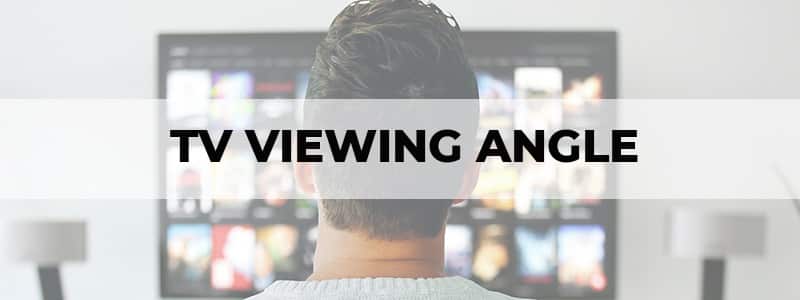
Not all TVs are created equal, and that’s a fact. Between the various types of resolution (reading lists comparing the best HDs to the best 4K TVs) and in deciding between the best OLEDs or the best QLEDs, it’s okay to get confused when making a new purchase.
Some factors are also not explicitly labeled on the box or used as unique selling points. One such factor which we consider very primary is that of the TV viewing angle.
The Importance Of The TV Viewing Angle
We know that the best viewing angle for TVs is from straight ahead, meaning directly facing the screen, with the TV opposite you.
Moving to the side, the image clearly starts to degrade and the best picture quality possible is slowly lost as colors start to fade, along with brightness loss, gamma shift, and the blacks looking more and more greyed out and much lighter than a black should be.
When buying a TV, the room you want to place it in matters. A curved TV’s viewing angles are differently “better” than, let’s say, an LED TV viewing angle, so factoring in the different positions from which your TV will be watched (viz-a-viz the placement of the furniture, perhaps), is key.
Some of the best 75-80 inch TVs utilize specific technology to account for and improve the watchability from different TV viewing angles. TV viewing angle calculators can also come in handy, such as the ones at Inch Calculator and Starico.
Color Washout
One of the casualties of a poor TV viewing angle is the phenomenon of color washout. This is a specific angle where the color drops below a certain threshold.
Even at a generous leeway of >80%, a noticeable difference can be observed around 10 degrees, whereas a good value is anywhere under 45 degrees.
The placement of the room comes into play again, but the entire point of educating ourselves on this topic is to pick a TV that will work better in a variety of contexts and situations, as opposed to having to make the most of having purchase a hundred-dollar TV that people have to crane their necks to enjoyably see (arguably putting a hamper on the enjoyability of it).
Then there’s also the issue of color shift. These are variations that change with the TV viewing angle contingent on the technology being used by your particular display wherein the hue and saturation for each tiny color value shifts along with the TV viewing angle. The general rule for testing is when colors shift by three degrees, which makes the colors “cooler”, or bluer than they should be.
Which TVs’ Viewing Angles Are Most Problematic?
Generally, plasma screen displays do not have an issue with TV viewing angles that are off-axis or during side angle viewing, which are the terms commonly used to described undesirable TV viewing angles. Each pixel is separately lit on a TV screen utilizing plasma technology.
On the other hand, however, LCD TVs are backlit, and the panel uses crystals to produce an image. Here, the panel technology being used in LCDs is what determines, to a large extent, the quality retained by the TV even as the observer changes their TV viewing angles from their end.
The technology being used is the first thing you must consider if you want to have an LCD with an optimum TV viewing angle. There are two types primarily used for this: the IPS and VA.
The IPA is known to maintain fairly accurate colors when off-axis or during side angle viewing. The black level raise is also satisfactory according to various tests performed by the relevant websites (such as RTINGS.com), and, best of all, the color shift happens gradually instead of all at once.
When it comes to VA, however, the contrast ratio is way better than that of IPA. This is a plus point and a benefit that it holds over the IPA technology LCD TVs, but the contrast is lost rapidly when you go off-axis, and the picture is immediately duller, greyer, and more washed out.
However, from the front, the blacks are much deeper; but if we were to simply watch it from the front viewing angle, we wouldn’t have had any of these problems, would we?
